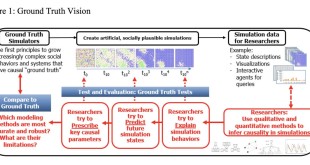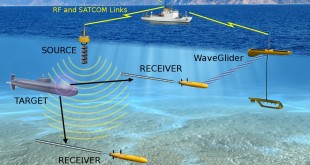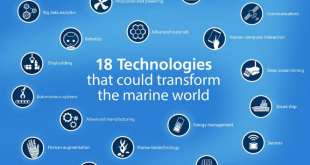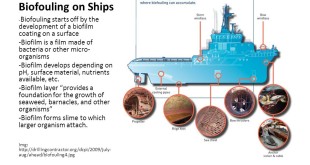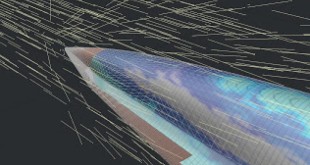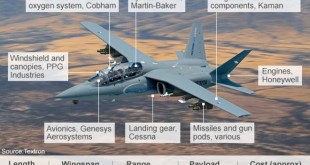The social sciences can play important roles in assisting military planners and decision-makers who are trying to understand complex human social behaviors and systems, potentially facilitating a wide range of missions including humanitarian, stability, and counter-insurgency operations. Current social science approaches to studying behavior rely on a variety of …
Read More »Monthly Archives: August 2018
DARPA MAA program aims to predict the terrorist threat of using weapons of mass terror (WMTs) through modeling and computational methods
DARPA launched the program Modeling Adversarial Activity (MAA) program with a goal to develop mathematical and computational techniques for modeling adversarial activity for the purpose of producing high-confidence indications and warnings of efforts to acquire, fabricate, proliferate, and/or deploy weapons of mass terror (WMTs). MAA assumes that an adversary’s …
Read More »DARPA’s TEAC program developed phased-array sonar technology for Unmanned Underwater Vehicles (UUW or UUV) to establish a network of distributed sonars for Anti Submarine Warfare
Sonars are one of the primary systems for detection and tracking of submarines in Anti Submarine warfare. However modern nuclear and diesel electric submarines have become very stealthy and quiet. Another challenge is diesel-electric submarines operating in littoral waters which generate high false alarm rates (FAR). One of the ways …
Read More »DARPA’s TEE program developing skyrmion based high-density and energy-efficient magnetic information storage devices
In magnetic memories, information (for example, a collection of bits) is stored as clusters of spins, which are either an up or a down (or put differently, a one or a zero). These spin clusters, which form the basis of magnetic memories, become less stable when reduced in size. Magnetic …
Read More »Global Maritime Security Risks and Global Marine Technology Trends 2030
Recent years have seen multiple new security challenges emerge in the maritime arena. Navies, coast guards and other maritime security agencies face a proliferation of security challenges. These include: illegal fishing of territorial waters; incursion of mineral exploitation across legal boundaries; maritime terrorism; narcotics smuggling; pollution as a result of …
Read More »New technologies to prevent Biofouling that costs shipping industries billions of dollars a year
Biofouling is one of the main problems faced by every type of ship at the sea. Marine growth such as barnacles and mussels have been the reason for problems such as decreased ship efficiency, corrosion etc. Biofouling not only sticks to the external surface of the ships but also gets into …
Read More »DARPA’s MDP program aims for fast materials development for military platforms in extreme environments
Military platforms—such as ships, aircraft and ground vehicles—rely on advanced materials to make them lighter, stronger and more resistant to stress, heat and other harsh environmental conditions. Currently, the process for developing new materials to field in platforms frequently takes more than a decade. This lengthy process often means that …
Read More »Airforce experimenting Light Attack Aircrafts as cheaper option for counter terrorism operations
Cities have become the new battleground and Hybrid or Urban Warfare the greatest threat being waged by ISIS to Boko Haram to Hamas to Ukraine rebels. New air, ground and sea based platforms and munitions are desired having capabilities of accurately engaging targets in urban terrain with low collateral damage. …
Read More »Polymer Photonics has wide applications for future small satellite systems, chemical and biological sensing and secure data storage
Silicon, which has been a leading material in microelectronic industry for decades, is an attracting platform for photonic Integrated Circuits ( PICs ) thanks to transparency in the most widely used telecom wavelength bands, high refractive index contrast with cladding materials (SiO2, polymers, air), well-known processing conditions and production scalability …
Read More »Cyber domain command and control should be resilient, survivable, and reliable supported by Artificial intelligence (AI), automation, and the cloud technologies
NATO ministers have designated cyber as an official operational domain of warfare, along with air, sea, and land. Cyber warfare has developed into a more sophisticated type of combat between countries, where you can destroy communications infrastructure, said Marc Rogers, Head of Security for DefCon, adding that ordinary people become …
Read More » International Defense Security & Technology Your trusted Source for News, Research and Analysis
International Defense Security & Technology Your trusted Source for News, Research and Analysis
